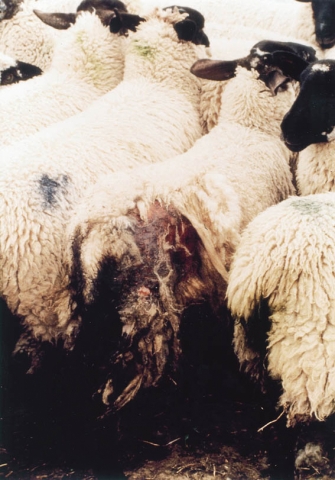
Blowfly Map And Report To Help Farmers Strike First Against Parasite
Elanco has launched a blowfly strike map that will be automatically updated as cases are reported, providing a near live resource for farmers, vets and industry professionals.
The predicted balmy temperatures and wet spells – perfect conditions for blowflies - have put farmers and vets on alert, with cases already reported in West Sussex, Hampshire, Devon, Conwy, Monmouthshire, Carmarthenshire, Wiltshire, and Gloucestershire.
The launch of the map comes in the wake of Elanco’s Strike First report, based on a survey of 122 UK farmers. Findings from the report revealed 9 out of 10 sheep farmers have been caught out by the parasite in the past, while sheep farmers in the south are twice as likely to experience blowfly strike earlier in the season compared to farmers in the north and three times as likely compared to those in Scotland.
In addition, the report revealed the majority of farmers agree the blowfly season is lasting longer (65%), while cases have been reported as early as February and as late as November.
Expert panel
The Strike First report investigated attitudes to blowfly strike risk, as well as regional differences, and pulled together an expert panel to define best practice and help sheep farmers prevent the risk of blowfly strike on their farm.
Expert panel member and independent sheep consultant Dr Fiona Lovatt said: “One of the worst mistakes a sheep farmer can make is to underestimate the huge cost of loss of production due to disease in comparison to the smaller cost of preventing it in the first place. Saving a few pounds off the cost of preventative measures will inevitably cost more in the long run.”
While the blowfly strike tracker will provide a timely reminder of the local risk, Matt Colston, technical consultant at Elanco, advised farmers to plan their prevention strategy and prevent early:
“Many farmers think strike is something they can manage because they’ve always done so. In some years it works well, but in most years they get caught out at the beginning and end of the season or when there is a sudden challenge. Rather than having one or two animals struck, they can find a large proportion of the flock struck at the same time.
“It takes a lot longer to treat a case than to apply a preventative treatment. Being prepared and preventing early is a planned event where sufficient manpower and resources are available. This is much easier to manage than an emergency treatment and will usually take less time.”
To view the full STRIKE FIRST report, visit http://bit.ly/strikefirstblowfly
To see if blowfly strike has been reported in your area, visit: http://www.farmanimalhealth.co.uk/blowfly-strike-tracker/
More from Elanco

 9 years ago
9 years ago  2036 views
2036 views
 3 days ago
3 days ago 